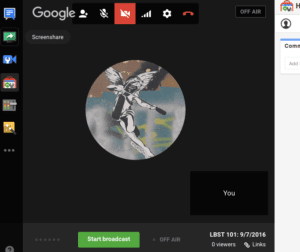Tomorrow Never Knows
In 2008, a post-Twitter world, technology writers and developers were already pondering the future of RSS readers. As time passed and topics cooled, pragmatic views appeared.
For context, Twitter emerged 6 years ago. The rise of RSS readers (or feed aggregators) is harder to pin down, but I can safely claim that significant adoption occurred approximately 6-8 years ago. RSS as a format specification has existed for over 12 years (if you include Netscape RSS). But the average user is not referencing a specicifcation—the majority of people are referring to RSS readers (e.g., Google Reader and NewNewsWire). The syndication format and feed reader became even more synonymous when web browsers such as Firefox integrated RSS readers into core features.
At a technical level we know that Twitter has not killed RSS. RSS is an XML serialization that has a wide variety of technical functions (See the point made by Brent Simmons, “RSS as plumbing,” in the article linked above). Twitter is a closed-source service provided by a business while RSS is an open syndication format accessible by a multitude of applications.
Get Back
I still use RSS readers alongside Twitter. I think they have different use cases, giving each tool strengths and weaknesses.
Twitter excels at:
- providing immediate updates, such as conferences and breaking announcements.
- allowing discovery of new information sources through social interaction.
- facilitating interactions with scholars. Send comments and questions to researchers.
- branding: provide information that is not communicated through formal communication and publications.
- ease of access: a popular and easy tool.
RSS Readers excel at:
- organized discovery: automatic listing of chronological entries, divided by sources.
- efficient access to long-form articles through TOC feeds.
- controlling what content you see (tweets can be off-topic).
- escaping business models: no “promoted” content or ads, which has the potential to create noise on Twitter.
- avoiding middleware (e.g., twitter.com). An RSS feed is created and consumed without an account to a web service.
Luckily we can use both tools simultaneously through mobile apps such as Flipboard. At the end of the day we all want content delivered on demand in our preferred containers: that need will outlive RSS and Twitter combined.
Help!
Have you abandoned RSS Readers? Is Twitter analogous to RSS Readers?




I predominantly use Flipboard, in addition to Twitter, where I formerly depended upon Google Reader and RSS feeds, for news.
I think the idea of RSS being dead is very funny. I predict that it will die when we give up on blogs as a platform–and we’re nowhere near that point, yet.
I miss sharing in Google Reader, but I still use it for reading. I also use Twitter and Facebook, but not interchangeably with RSS. Whereas I can follow many blogs of [relatively] known quality via RSS reader, the links people share on Facebook and Twitter vary wildly in usefulness, quality, and relevance. (That’s both a strength and a weakness; I’ve started following many blogs because of posts shared on social media. I’ve also wasted a fair bit of time.)
I use RSS more now after being frustrated by the Twitter noise, so its alive and kickin’ on my iPad.
Twitter and RSS serve different functions. On Twitter I find things that people want to tell their friends and colleagues about. An RSS feed lets me follow a particular site systematically. They’re both very useful, but for different purposes.